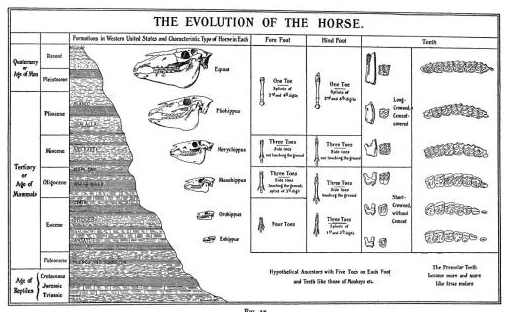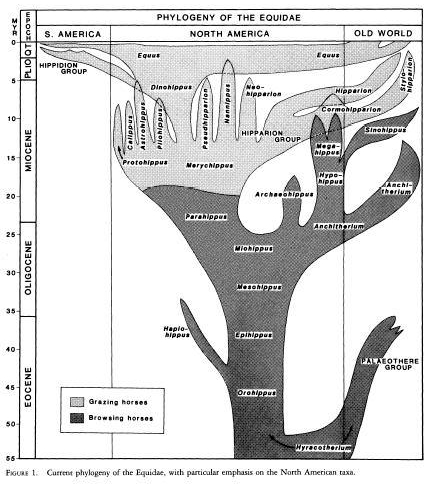There’s a great expansion in the diversity of horses in the mid-Miocene, especially horses that are adapted to grazing rather than browsing. The shift to grazing is going on world wide among many different groups. In South America the big grazers are the liptoterns, ungulates not closely related to horses that evolve to look a lot like them, with high-crowned grazing teeth, single-toed hoofed feet and legs built for speed. (Edgar Rice Burroughs took the name thoat – what his characters rode around on on Barsoom/Mars — from one genus of liptotern, Thoatherium.)

We often think of evolution as a matter of organisms adapting to their environments, but when the environment is other organisms, each side may be chasing a moving target. Or sometimes the sides may reach an equilibrium. In the case of grazing animals, there’s a process of coevolution that goes on between grazers and grasses. Where grazers are active, the plants that survive are grasses, which keep leaves above the ground but grow from underground. And this works in the other direction: in moderately dry climates, grasses are more productive than taller brushy plants, so it’s when grasses take over that there’s enough food around for grazers – a mutually reinforcing cycle. With drier climates from the mid-Miocene on, grasslands and grazers get to be more and more important.
So a lot of the story of life on Earth is not just the appearance of this or that cool animal, but also the evolution of ecosystems. At the same time grasslands were spreading on land, for example, kelp forests were spreading in coastal oceans. We’ll see how important grasslands are in human evolution and history. And kelp forests, with their rich fish populations, might have been important too, as the highway that the earliest Americans followed along the Pacific coast to the New World.


